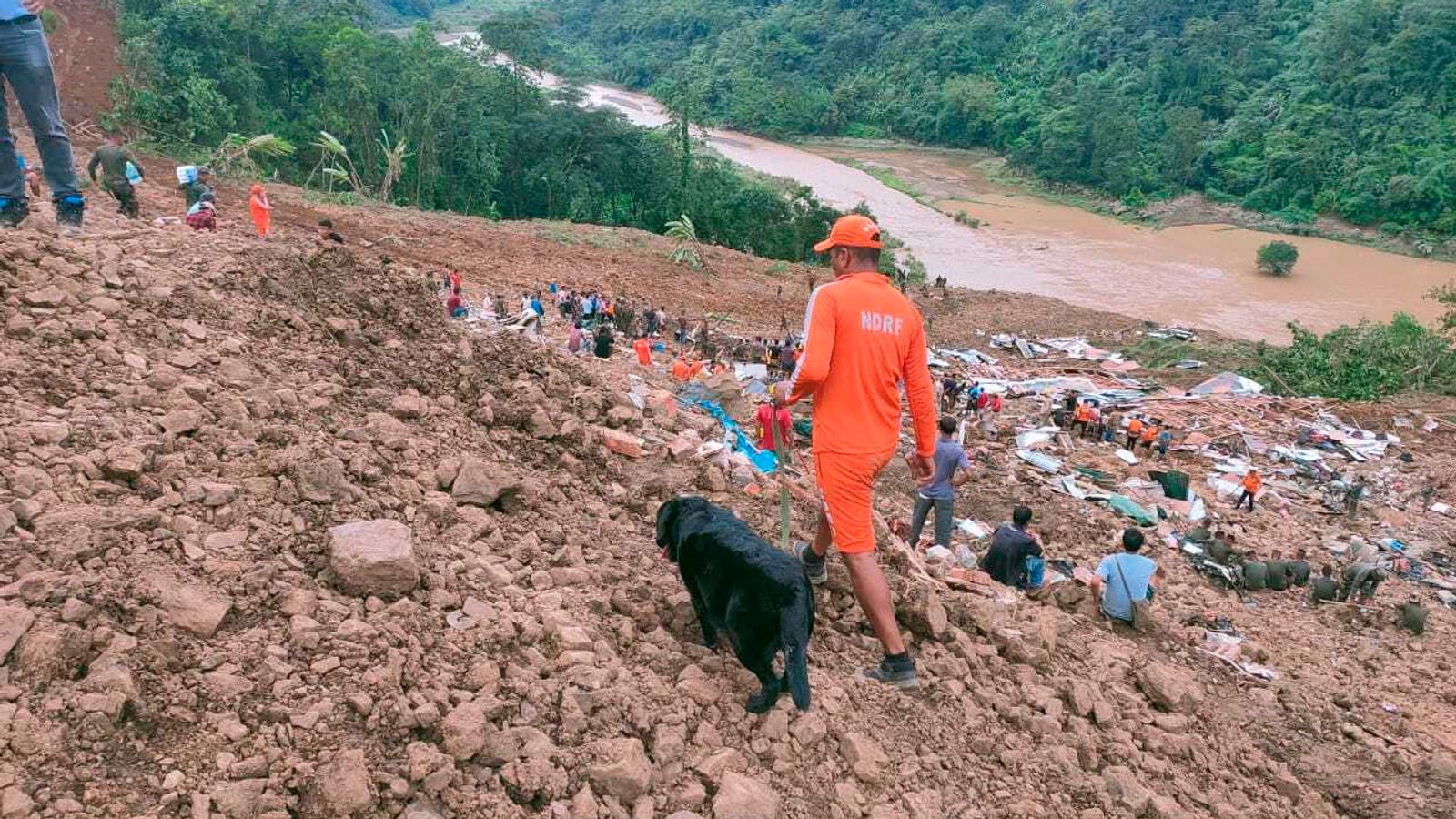Heavy rain lasting weeks has triggered a landslide in northeast India, killing at least 14 people and leaving more than 30 others missing.
Police, villagers and emergency workers have been trying to rescue those buried under the debris in Noney, Manipur state.
Seven of those confirmed dead were members of the volunteer Territorial Army, state chief minister N Biren Singh said, and five Indian Railway workers are among the missing.
The landslip affected a railway being built in the area.
The army had been at the scene as they were providing security for railway officials due to an insurgency in the area.
The decades-old uprising is over the creation of a separate homeland for ethnic and tribal groups.
Army helicopters were put on standby to assist rescue operations after mud and earth crashed down a hillside at 2am on Thursday but weather was described as very hostile and more landslides were said to be hampering the rescue operation.
Japan swelters in hottest temperatures for 150 years as early heatwave hits Northern Hemisphere
France: Kitesurfer killed and several people injured after ‘mini-tornado’ hits beach
At least 27 killed and millions of homes underwater after flooding wreaks havoc in India and Bangladesh
Rain has fallen constantly over the past three weeks, wreaking havoc across India‘s northeast, home to 45 million people.
Neighbouring Bangladesh, which is downriver of much of the rainfall, has also been badly affected.
So far, an estimated 200 or so people have been killed as a result of the rain in states including Assam, Manipur, Tripura and Sikkim, and 42 people have died in Bangladesh since 17 May.
Millions of people are thought to have been forced to leave their homes.
While the monsoon season normally comes at around this time, scientists said the annual rains arrived early this year, with torrential rain lashing northeastern India and Bangladesh as early as March.
Elsewhere, the monsoon downpours have been heavy.
Experts say climate change is at least party responsible for the erratic, early rains.
With global temperatures due to rise further as a result of climate change, scientists say the monsoon season will continue to be more variable and unpredictable, so that rain that would normally fall throughout the season will arrive in a shorter time period.
Despite heavy rain in some areas, the latest figures from the state-run weather office showed that India received 8% less rainfall than average in June because of scanty rainfall in the central parts of the country.
Read more:
Hundreds of thousands evacuated in China after severe flooding
US hit by floods, mudslides, wildfires resembling ‘an erupting volcano’ and a record heatwave in two days
Central India received as much as 54% less rainfall than normal in the month, according to India Meteorological Department data, prompting fears for areas that are extensively planted with cotton, soybean and sugar cane.
In early May, a heatwave caused a cut in forecasts for yields of India’s wheat crop, resulting in the country banning the export of the staple, fuelling a rise in the price of the food stuff on world markets, where the Ukraine war had already forced prices to rise.








